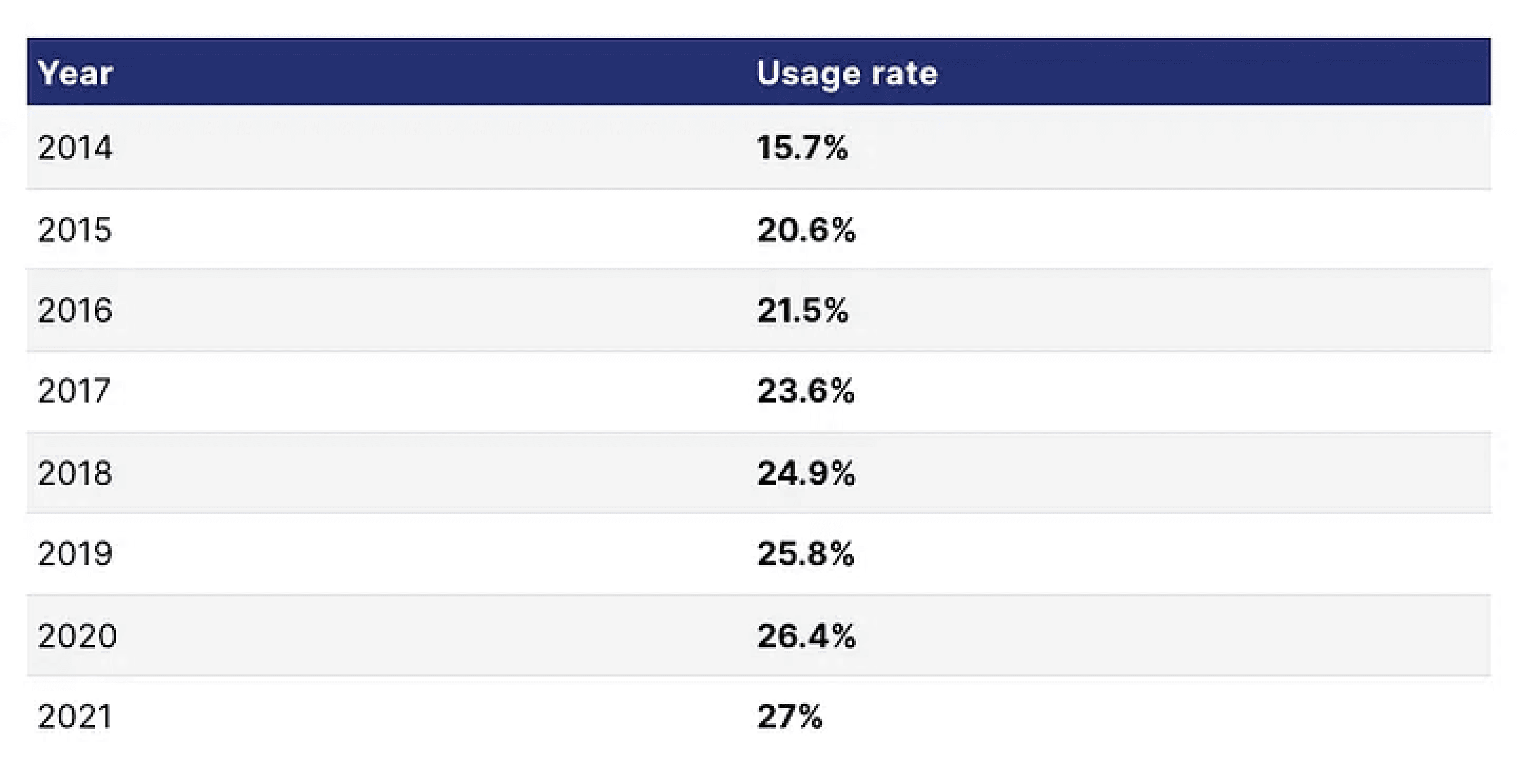Web2 Marketing Is Dying — How to Evolve
Feb 28, 2022
Since the introduction of the internet, digital marketing has dominated traditional advertising in terms of performance and cost efficacy.
With the rise of blockchain, crypto, and digital wallets, the old marketing ways are dying and will no longer be adequate to satisfy people. Customers will start to expect more value from companies than they might be ready to deliver. But those that don’t play the next 5 years right may not live to compete in the new web3 powered economy.
Old Web2 Ways
It’s been a fruitful couple decades for digital marketing teams. They’ve had access to a powerful suite of tools that help them mine an unprecedented amount of value from their customers. Personalized advertising, search engine optimization, ROI measurements, scarcity campaigns, and conversion rate data have helped marketing teams drive their businesses to new heights.
This gold rush is coming to an end. Customers are getting tired of it. Digital marketing has become too predictable and the value exchange is completely one sided. Let’s have a brief look at the current state of the web2 marketing mix and the direction this is headed.

The Marketing Mix
A web2 digital marketing mix relies on a combination of the following:
Personalised paid advertising
Heaps of organic content
Scarcity driven offers
Social media platforms such as Facebook and Instagram with content.
Customers are viewed as an “audience” and get content and advertisement shoved down their throats every second of every day that they spend online. The internet is full of content with an agenda and users are experiencing massive content fatigue.
The Results
Because so many companies are battling for their “audience” attention, or moments thereof, they’re desperately hammering every channel possible. Brands will follow people with their digital advertisements across platforms, scream at them with social media content, and hammer their inbox with daily emails reminding them that they’re still there. It’s like a clingy ex-partner who refuses to accept that the relationship is over. We’ve all had enough.
Instead of feeling valued, customers feel spammed. Marketing feels like a nuisance to them that needs to be disposed of.
The Outcome
In the end, it shouldn’t come as a surprise that it’s harder than ever to convert customers. Because people feel spammed by incessant marketing campaigns that bring them no value, many of them take a negative view towards it. A 2021 study states that 41% of US consumers feel that targeted digital marketing is invasive and since 2014, the uptake of ad blockers has grown by 12%.

Making matters worse, companies are squeezing more and more out of their “audience” personal data, reducing their digital lives down to clicks, views, and engagement. Privacy is a lost cause and customer data gets consistently mined and sold to the highest bidder.
Long story short, web2 is not a customer centric environment.
New Web3 Ways
In the world of web3, traditional digital marketing tactics will fall flat on their face. Or at least most of them will. But let’s start by looking at some tactics from web2 that are still going to be relevant in the web3 ecosystem.
Carry Over Tactics
Despite web3 coming with a wide array of new tools and techniques for engaging customers, there are some old web2 staples that need to be maintained. What are these?
Organic content marketing
Search engine marketing
Why are they still relevant in web3?
Marketers have to go where people’s attention is. The fact of the matter remains that people use Google every day to solve problems and find things they need. Web3 applications can’t ignore this and still need to depend on web2 to reach their customers.
For example, if you’re looking to swap your crypto tokens at the lowest gas fees, customers would still go to Google to search for the best solution. Marketers will always need to ensure that their brand is visible there.
Similarly, social media isn’t going anywhere. Sure, there are new decentralized platforms coming like Lens Protocol, but the majority of the world still remains on web2 social media platforms. That means web3 companies need to exist there too.
It’s all about capturing people’s attention, or what marketers would call “Top of Funnel” tactics. Once they have their customers attention, however, they need to rethink their strategies. This is where the web3 mix comes in.

What’s new in web3?
Marketing is about to go through a complete metamorphosis. Instead of shouting at an involuntary audience, web3 focuses on building communities and sharing value with users.
In this environment, marketing takes on a many-to-many relationship between the community members and the organization that’s speaking to them, creating a more immersive experience for the user.
The Marketing Mix
The new marketing mix consists of tools and techniques that focus on involving the users and offering them something of value in return for their contributions or attention. So far, the web3 marketing stack contains:
Storytelling and lore
Co-creative campaigns with super users and fans
Token-gated access to exclusive content
Incentivization through co-owernship
Tribalism and culture as the focal point
These techniques all involve the user and introduces opportunities for sharing value with them. Furthermore, users can use digital wallet sign-ons to platforms, meaning no personal data will ever be shared or required from them.
The Results
Taking a user centric approach to marketing may be more expensive in the short-term and feel like a gamble to many businesses. But the results they will get over time are far more valuable than any other tactic.
Leveraging the web3 mix will involve the user in marketing campaigns and even reward them for taking a desired action (instead of the other way around). There are examples out there of brand’s that use NFT “treasure hunts” as a marketing tool. These hunts send users on a journey across the internet to find hidden NFTs. During the journey, users are exposed to a brand’s products or services, are incentivized to use them, and receive a reward at the end.
And guess what? Users never have to share their personal data with the brand. This results in happier users who are much more likely to remember the brand and the product, as well as share it with their friends.
The Outcome
The marketing teams that get this right in the next 5 years will obliterate those that don’t. There’s no way to pull wool over the customer’s eyes anymore. They’ll either know you care about them or they won’t. There’s no inbetween. This should lead to a much more inclusive, creative, and fair market place.
For brands, it will mean happier customers, voluntary brand ambassadors, and organic referrals beyond belief. The end outcome is a much healthier user base that wants to be exposed to interesting companies and brands, as opposed to run away from them.
In Conclusion
Traditional digital marketing is dying. Marketing teams will need to undergo a big shift in order to stay relevant and effective. This effort will require coordination, financial management, community management, and technical understanding. In order to stay relevant, marketing leaders will need to rethink their strategies and adopt tactics that may feel a little uncomfortable in the beginning. But change is always uncomfortable.
But above all, web3 marketing focuses on the end user. And I don’t mean that the product is focused on the user. No no, that’s a given. I mean the actual marketing experience. Does it benefit the customer to experience a marketing campaign, regardless if they buy the product/service or not?
If the answer is yes, the campaign is a success. If it’s no, back to the drawing board!
Marketing teams have an opportunity to jump on this now and gain a huge advantage before customers begin to expect it. So go out there and be creative, capture your fan’s attention, and give them a memorable and valuable experience!


